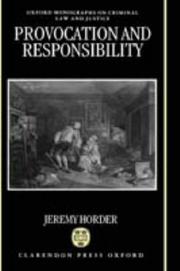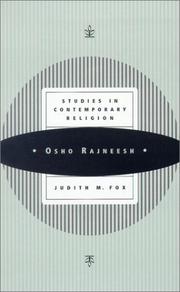| Listing 1 - 10 of 48 | << page >> |
Sort by
|
Book
ISBN: 9782275038841 Year: 2012 Publisher: Paris : L.G.D.J.,
Abstract | Keywords | Export | Availability | Bookmark
 Loading...
Loading...Choose an application
- Reference Manager
- EndNote
- RefWorks (Direct export to RefWorks)
Provocation (Criminal law) --- Criminal liability --- Provocation (Droit pénal) --- Responsabilité pénale --- Provocation (Droit pénal) --- Responsabilité pénale --- Provocation (droit pénal) --- Responsabilité (droit) --- Causalité (droit) --- Justification (droit) --- France
Book
ISBN: 9264274693 Year: 2014 Publisher: Paris : OECD Publishing,
Abstract | Keywords | Export | Availability | Bookmark
 Loading...
Loading...Choose an application
- Reference Manager
- EndNote
- RefWorks (Direct export to RefWorks)
Skin tests. --- Cutaneous tests --- Provocation tests (Medicine)
Dissertation
Year: 1976 Publisher: [S.l. : chez l'auteur],
Abstract | Keywords | Export | Availability | Bookmark
 Loading...
Loading...Choose an application
- Reference Manager
- EndNote
- RefWorks (Direct export to RefWorks)
Bronchial provocation tests --- Bronchi --- Bronchial spasm --- Bronches
Book
ISBN: 9780415560177 0415560179 9780415560207 0415560209 Year: 2012 Publisher: London : Routledge,
Abstract | Keywords | Export | Availability | Bookmark
 Loading...
Loading...Choose an application
- Reference Manager
- EndNote
- RefWorks (Direct export to RefWorks)

ISBN: 0198256965 Year: 1992 Publisher: Oxford Clarendon
Abstract | Keywords | Export | Availability | Bookmark
 Loading...
Loading...Choose an application
- Reference Manager
- EndNote
- RefWorks (Direct export to RefWorks)
Criminal liability --- Provocation (Criminal law) --- History --- History

ISBN: 1560851562 Year: 2000 Publisher: Leumann (Torino) Elle Di Ci
Abstract | Keywords | Export | Availability | Bookmark
 Loading...
Loading...Choose an application
- Reference Manager
- EndNote
- RefWorks (Direct export to RefWorks)
Osho Rajneesh --- Tantra --- Zen --- Sheela --- Poona --- provocation
Book
ISBN: 2209053757 9782209053759 Year: 1980 Publisher: Paris : Ed. sociales,
Abstract | Keywords | Export | Availability | Bookmark
 Loading...
Loading...Choose an application
- Reference Manager
- EndNote
- RefWorks (Direct export to RefWorks)
Demonstrations --- Provocation --- --Manifestation --- --Témoignage --- --Demonstrations --- Demonstrations - France --- Manifestation --- Témoignage
Book
ISBN: 9264071105 9789264071100 Year: 2010 Publisher: Paris : OECD Publishing,
Abstract | Keywords | Export | Availability | Bookmark
 Loading...
Loading...Choose an application
- Reference Manager
- EndNote
- RefWorks (Direct export to RefWorks)
The basic principle underlying the Local Lymph Node Assay (LLNA) in mouse is that sensitizers induce a primary proliferation of lymphocytes in the auricular lymph nodes draining the site of chemical application. This proliferation is proportional to the dose applied and provides a measurement of sensitisation. The method described is based on the use of radioactive labelling to measure cell proliferation. A minimum of four animals is used per dose group, with a minimum of three concentrations of the test substance, plus a negative control group treated with the vehicle only, and a positive control, as appropriate. The experimental schedule of the assay is during 6 days. Thereafter, the animals are killed and a cell suspension of lymph node cells is prepared. The incorporation of 3H-methyl thymidine is measured by ¦Â-scintillation counting as disintegrations per minute (DPM). The Test Guideline includes performance standards that can be used to evaluate the validation status of new and/or modified test methods that are functionally and mechanistically similar to the LLNA. A reduced LLNA approach which could use up to 40% fewer animals is also described as an option. This study includes: measurements (weighing, DPM), and clinical daily observations. Results are expressed as the Stimulation Index (SI).The SI is obtained by calculation and should be ¡Ý3 before classification of the test material as a skin sensitizer is warranted.
Environment --- Skin tests --- Cutaneous tests --- Provocation tests (Medicine)
Book
ISBN: 9789264264359 Year: 2018 Publisher: Paris : Organisation for Economic Co-operation and Development,
Abstract | Keywords | Export | Availability | Bookmark
 Loading...
Loading...Choose an application
- Reference Manager
- EndNote
- RefWorks (Direct export to RefWorks)
The present Key Event based Test Guideline (TG) addresses the human health hazard endpoint skin sensitisation, following exposure to a test chemical. More specifically, it addresses the activation of dendritic cells, which is one Key Event on the Adverse Outcome Pathway (AOP) for Skin Sensitisation. Skin sensitisation refers to an allergic response following skin contact with the tested chemical, as defined by the United Nations Globally Harmonized System of Classification and Labelling of Chemicals (UN GHS). This TG provides three in vitro test methods addressing the same Key Event on the AOP: (i) the human cell Line Activation Test or h-CLAT method, (ii) the U937 Cell Line Activation Test or U-SENS and (iii) the Interleukin-8 Reporter Gene Assay or IL-8 Luc assay. All of them are used for supporting the discrimination between skin sensitisers and non-sensitisers in accordance with the UN GHS. Test methods described in this TG either quantify the change in the expression of cell surface marker(s) associated with the process of activation of monocytes and DC following exposure to sensitisers (e.g. CD54, CD86) or the changes in IL-8 expression, a cytokine associated with the activation of DC. In the h-CLAT and U-SENS assays, the changes of surface marker expression are measured by flow cytometry following cell staining with fluorochrome-tagged antibodies. In the IL-8 Luc assay, the changes in IL-8 expression are measured indirectly via the activity of a luciferase gene under the control of the IL-8 promoter. The relative fluorescence or luminescence intensity of the treated cells compared to solvent/vehicle control are calculated and used in the prediction model, to support the discrimination between sensitisers and non-sensitisers.
Skin tests --- Cutaneous tests --- Provocation tests (Medicine) --- Skin tests.
Book
ISBN: 9264279288 9789264279285 Year: 2017 Publisher: Paris : OECD Publishing,
Abstract | Keywords | Export | Availability | Bookmark
 Loading...
Loading...Choose an application
- Reference Manager
- EndNote
- RefWorks (Direct export to RefWorks)
With a view to assisting the evaluation of integrated approaches to testing and assessment (IATA) in regulatory decision-making within OECD Member Countries, this guidance document provides guidance on the reporting of defined approaches to testing and assessment in the area of skin sensitisation using the adverse outcome pathway (AOP) as a conceptual framework. Annex 1 (page 25) outlines twelve illustrative case studies for skin sensitisation and Annex 2 (page 279) lists information sources used within the case studies.
Skin tests. --- Allergy --- Diagnosis. --- Cutaneous tests --- Provocation tests (Medicine)
| Listing 1 - 10 of 48 | << page >> |
Sort by
|

 Search
Search Feedback
Feedback About
About Help
Help News
News